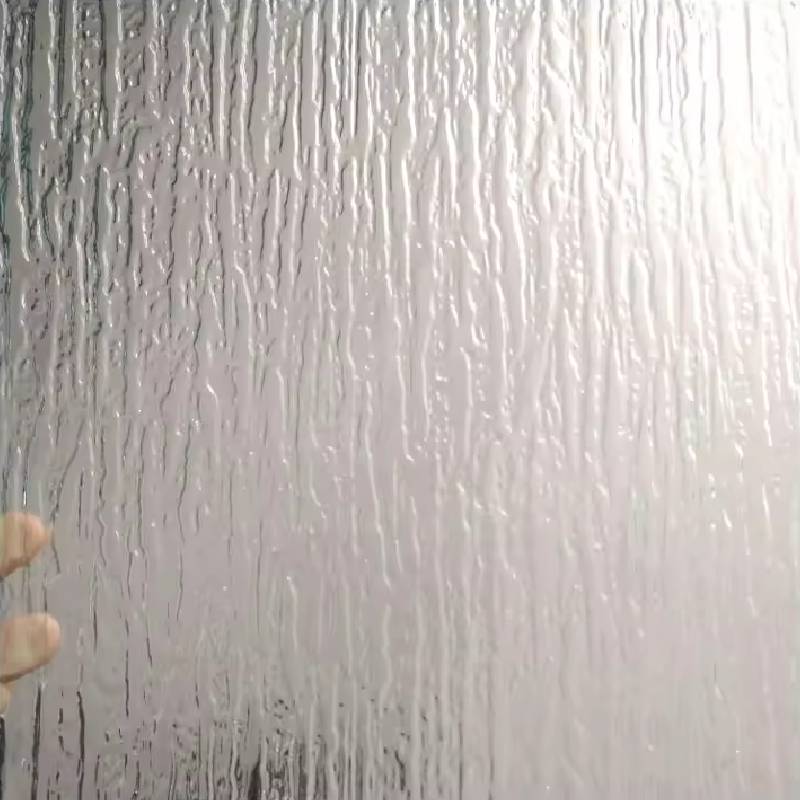Clear Annealed Float Glass An Essential Element in Modern Architecture
Clear annealed float glass is a fundamental material in contemporary architecture and design, recognized for its clarity, versatility, and cost-effectiveness. This type of glass is produced through the float glass process, which involves melting raw materials such as silica sand, soda ash, and limestone at high temperatures. The molten glass is then floated on molten tin, creating a smooth, flat surface that boasts exceptional optical clarity and uniform thickness.
One of the most significant advantages of clear annealed float glass is its transparency. This property makes it an ideal choice for various applications, including windows, glass doors, and facades. In residential and commercial buildings, large glass panels allow natural light to flood interior spaces, reducing the need for artificial lighting and enhancing energy efficiency. The aesthetic appeal of clear glass can also create a sense of openness and connectivity between indoor and outdoor environments, a feature highly sought after in modern design.
Additionally, clear annealed float glass is known for its ease of fabrication. It can be cut, drilled, and tempered to meet specific design requirements, providing architects and builders with a high degree of flexibility. The glass can also be laminated or coated with low-emissivity (low-E) substances, further improving its thermal insulation properties and reducing heat gain or loss. This adaptability is crucial in meeting the diverse needs of contemporary architecture, where sustainability and energy efficiency are becoming increasingly important.
clear annealed float glass
Moreover, clear annealed float glass is relatively affordable compared to other glass types, making it accessible for a wide range of projects. Its widespread availability fosters an environment of innovation in building design, as architects can experiment with larger glass installations without breaking budget constraints.
However, while clear annealed float glass offers many benefits, it also has limitations. It is not as strong as tempered or laminated glass, making it less suitable for applications where impact resistance is critical. Therefore, understanding the specific requirements of a project is essential when selecting the appropriate type of glass.
In conclusion, clear annealed float glass remains a cornerstone of modern architecture. Its combination of beauty, functionality, and cost-effectiveness continues to inspire architects and designers around the world, creating spaces that enhance both lifestyle and aesthetic appeal. As the industry evolves, the role of this versatile material will undoubtedly expand, paving the way for even more innovative and sustainable architectural solutions.
 Afrikaans
Afrikaans  Albanian
Albanian  Amharic
Amharic  Arabic
Arabic  Armenian
Armenian  Azerbaijani
Azerbaijani  Basque
Basque  Belarusian
Belarusian  Bengali
Bengali  Bosnian
Bosnian  Bulgarian
Bulgarian  Catalan
Catalan  Cebuano
Cebuano  Corsican
Corsican  Croatian
Croatian  Czech
Czech  Danish
Danish  Dutch
Dutch  English
English  Esperanto
Esperanto  Estonian
Estonian  Finnish
Finnish  French
French  Frisian
Frisian  Galician
Galician  Georgian
Georgian  German
German  Greek
Greek  Gujarati
Gujarati  Haitian Creole
Haitian Creole  hausa
hausa  hawaiian
hawaiian  Hebrew
Hebrew  Hindi
Hindi  Miao
Miao  Hungarian
Hungarian  Icelandic
Icelandic  igbo
igbo  Indonesian
Indonesian  irish
irish  Italian
Italian  Japanese
Japanese  Javanese
Javanese  Kannada
Kannada  kazakh
kazakh  Khmer
Khmer  Rwandese
Rwandese  Korean
Korean  Kurdish
Kurdish  Kyrgyz
Kyrgyz  Lao
Lao  Latin
Latin  Latvian
Latvian  Lithuanian
Lithuanian  Luxembourgish
Luxembourgish  Macedonian
Macedonian  Malgashi
Malgashi  Malay
Malay  Malayalam
Malayalam  Maltese
Maltese  Maori
Maori  Marathi
Marathi  Mongolian
Mongolian  Myanmar
Myanmar  Nepali
Nepali  Norwegian
Norwegian  Norwegian
Norwegian  Occitan
Occitan  Pashto
Pashto  Persian
Persian  Polish
Polish  Portuguese
Portuguese  Punjabi
Punjabi  Romanian
Romanian  Russian
Russian  Samoan
Samoan  Scottish Gaelic
Scottish Gaelic  Serbian
Serbian  Sesotho
Sesotho  Shona
Shona  Sindhi
Sindhi  Sinhala
Sinhala  Slovak
Slovak  Slovenian
Slovenian  Somali
Somali  Spanish
Spanish  Sundanese
Sundanese  Swahili
Swahili  Swedish
Swedish  Tagalog
Tagalog  Tajik
Tajik  Tamil
Tamil  Tatar
Tatar  Telugu
Telugu  Thai
Thai  Turkish
Turkish  Turkmen
Turkmen  Ukrainian
Ukrainian  Urdu
Urdu  Uighur
Uighur  Uzbek
Uzbek  Vietnamese
Vietnamese  Welsh
Welsh  Bantu
Bantu  Yiddish
Yiddish  Yoruba
Yoruba  Zulu
Zulu 

